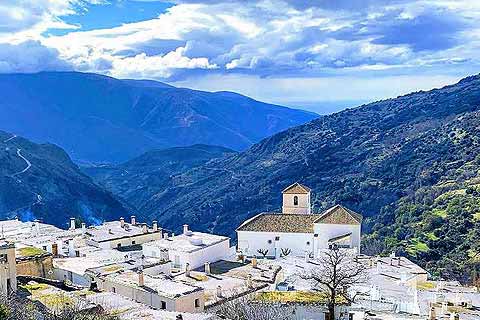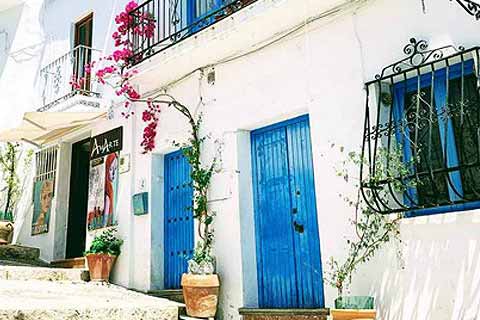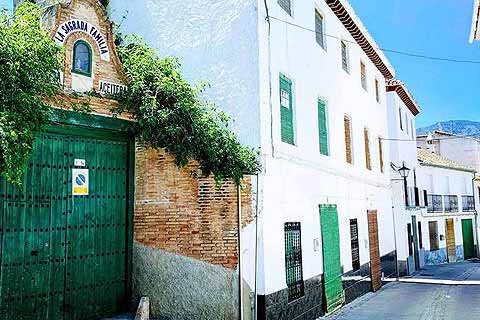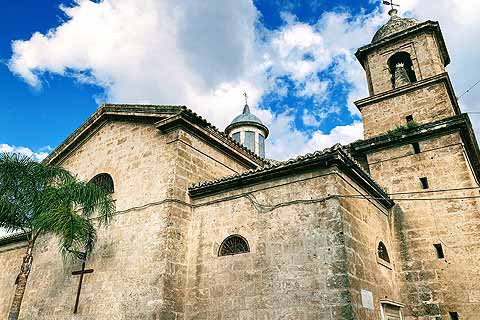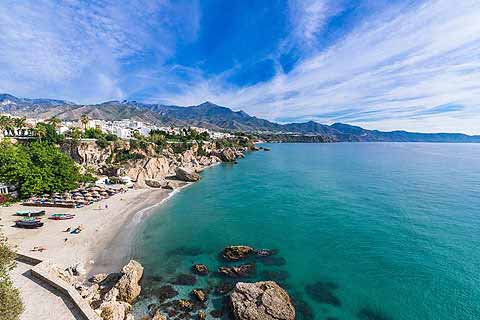Moorish History of Almuñécar
But First... The Visigoths
Before the Moors controlled Spain there was another Germanic group that occupied the peninsula, the Visigoths. These barbarians came from the Balkan peninsula (modern day Serbia and Bulgaria) and existed in a less sophisticated tribal society.The Visigoths are well known in history for sacking the Roman Empire. When the Huns moved into western Europe, the Visigoths moved from the west down into Italy, famously taking Rome in 410 AD. From Italy they moved back north and down into Spain where they pushed the Romans out and took Toledo as their capital.
Until around 700 AD the Visigoths ruled the land but with much strife among their nobility. The Roman nobles still ran the financial system and their Bishops were still the senior figures in the land causing much tension between the ranks.
The Romans at this time were a very sophisticated people but the Visigoths were long-haired, crude and adorned with gaudy jewelry. Town life declined under the Visigoths and in time, with much conflict and undermining within their government, the moors were able to move in and conquer the land.
Who Were the Moors?
The Moors were nomadic tribes that came from Northern Africa; originally, they were the inhabitants of Mauretania (Mauretania is the Latin name for an area in the ancient Maghreb stretching from present-day Algeria westwards to the Atlantic, covering northern Morocco, and southward to the Atlas Mountains).They overran the Visigoths in 711 AD when they invaded Spain through the Straits of Gibraltar, bringing their Islamic religion and culture with them.
Stability in Muslim Spain came 45 years later with the establishment of the Andalusian Umayyad dynasty, which lasted from 756 to 1031. The Omeyan prince, Amir Abd al-Rahman, founded the independent Emirate of Cordoba, and was able to get the various Muslim groups who had conquered Spain to pull together in ruling it.
The Caliphate steadily grew in wealth, power, and culture, but ultimately, the Moors were never able to establish a stable central government. In the 11th century the caliphate fell, and Moorish Spain was captured by the Almoravids.
Seven hundred years of Moorish influence left an unmistakable mark on Spain, making it markedly different even today from the rest of Western Europe. The Moors not only brought their religion, but also their music, their art, their view of life, and their architecture...two of the greatest examples of which are the Alhambra in Granada and the Escorial in Cordoba.
Other cities full of Moorish culture are Toledo, Granada, Malaga and Seville.
Where does the name Andalucia come from?
The name al-Andalus (الأندلس) was first evidenced in inscriptions on coins minted by the Umayyad Dynasty that ruled Iberia, from 750 AD. The study of the origin of the name has traditionally been traced from the name of the Vandals, who settled in Spain in the 5th century, but it is disputed, as well as the area that the name was said to encompass.In its present form the name Andalucia is derived from the Arabic name for Muslim Iberia, "Al-Andalus". The Spanish form, Andalucía, was introduced in the 13th century. The name now refers to those territories still under the Moorish rule until its surrender, generally south of Castilla Nueva and Valencia.
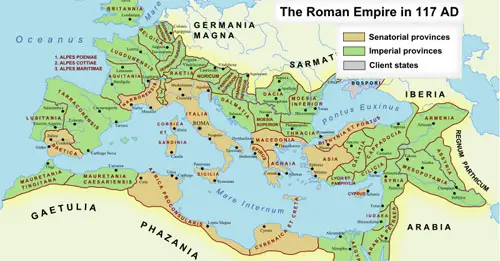
The Roman Empire in 117 AD
Moorish Almuñécar
The first Muslim invasion of southern Spain came in 711 AD at or near Gibraltar. In Almuñécar, the town remembers the 15th of August 755 when the Omeyan prince Abd ar-Rahman I of Damascus, the founder of the Emirate of Cordoba, arrived onto its shores from North Africa to establish his Moorish kingdom.Being here for over 800 years, the Moorish culture has probably left the greatest mark on this area than any other. The Moors introduced the growing of sugar cane to Almuñécar and sustained the towns thriving fishing industry throughout the Mediterranean.
Many of the streets and buildings of the old town were developed by the Moors as well as the towers that dot the coastlines. The San Miguel castle, originally built by the romans, remained the stronghold of the city and the seat of government and its walls were strengthened during Moorish rule. Extensive dungeons were also built for those out of favor with local rulers.
The cross on Peñon del Santo, the rock at the old harbor entrance, marks the defeat of the Arabs, their surrender at Almuñécar, and the beginning of Christian rule in 1489.
Moorish Monuments to visit in Almuñécar
The white washed houses of the Old Town in Almuñécar were built by the Moors, as well as the Watchtowers that protected the coastline. Much of the San Miguel castle was also further strengthened by the Arabs.In honor of the Prince Abd ar-Rahman I a monument can be found at the base of the Peñon de Cristobal. And, the Cross atop the mighty Peñon represents the final Moorish surrender from the area and the beginning of Cristian rule.


